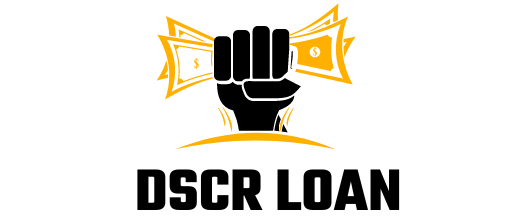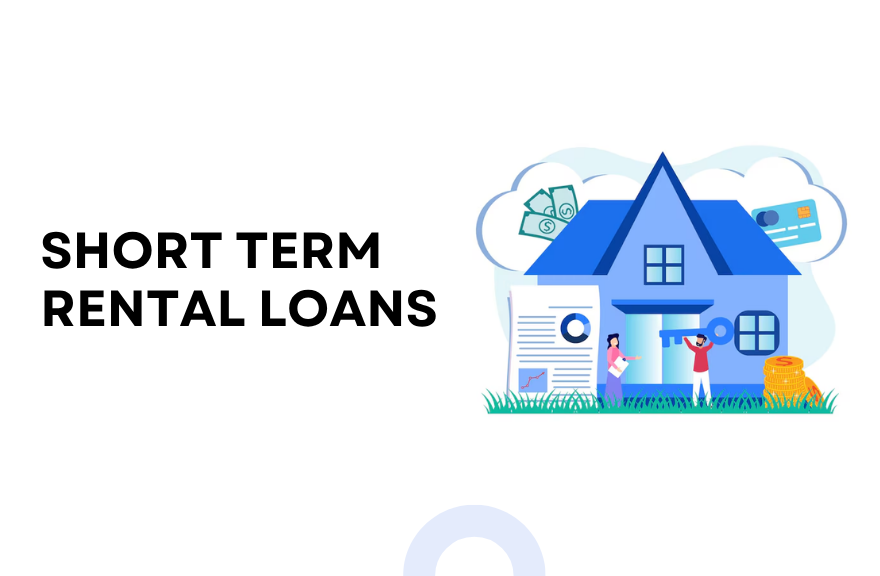Short term rentals have quickly emerged as one of the most profitable and flexible real estate investment strategies in the United States. Popular platforms like Airbnb, Vrbo, and Booking.com continue to drive demand, attracting investors seeking strong cash flow opportunities. Many real estate buyers are now turning to short term rental loans to acquire new properties or refinance existing investments. These loans provide a way to leverage property income rather than relying solely on traditional income documentation.
This comprehensive guide covers everything investors need to know about financing short-term rental properties. You will learn how these loans work, the types available, lending requirements, and how to select the best option for your investment goals.
What Are Short Term Rental Loans?
Short term rental loans are a specialized financing option for purchasing or refinancing properties intended for short-term occupancy. These properties are typically listed on vacation rental platforms or offered as furnished rentals for stays ranging from a few nights to several weeks. Unlike traditional mortgages, which rely on personal income and long-term leases, this financing evaluates projected rental income. This method helps investors qualify based on the property’s performance rather than personal earnings.
This type of financing is particularly useful for self-employed individuals, freelancers, or real estate investors with non-traditional income sources. By focusing on cash flow from the property, lenders can assess repayment ability more accurately. It also allows borrowers to expand their rental portfolios without relying solely on W-2s or tax returns. Proper documentation and realistic rental projections are essential for approval and long-term success.
Why Short Term Rentals Are Gaining Popularity
Short term rentals are rapidly gaining popularity among investors across the United States due to their strong income potential. Nightly rental rates often exceed monthly rents from long-term tenants, particularly in high-demand tourist areas. This makes them an attractive option for those looking to generate higher cash flow. Flexible usage allows owners to reserve dates for personal stays while still earning income during available periods.
Another key advantage is scalability, as income from one short term rental can help investors qualify for financing to acquire additional properties. Tax benefits also play a role, with mortgage interest, depreciation, and operating expenses potentially deductible under IRS rules. Over time, investors can enjoy property appreciation alongside rental income, building both immediate cash flow and long-term equity in valuable real estate markets.
Types of Short Term Rental Mortgages
Not all financing options are suitable for every investor. Depending on your financial profile, investment strategy, and experience level, some loans may be more appropriate than others. DSCR loans, for example, are popular with real estate investors because they evaluate the property’s ability to generate income rather than relying on the borrower’s personal earnings. These loans typically require a DSCR of 1.0 or higher and are available to both LLCs and individuals with flexible fixed or adjustable-rate terms.
Bank statement loans cater to self-employed individuals or those with irregular income. Lenders review 12 to 24 months of personal or business bank statements to verify income instead of tax returns. This approach benefits sole proprietors, freelancers, and gig economy workers who may struggle with traditional documentation. These loans are often used to finance second homes or vacation rental properties, providing a practical solution for investors with non-traditional income sources.
Asset-based loans rely on your liquid assets for approval and are ideal for high-net-worth individuals or retirees. Conventional loans can fund second homes or investment properties but may restrict short term rental usage and have stricter documentation requirements. Bridge or hard money loans offer fast funding and short repayment periods, making them suitable for quick acquisitions, fix-and-flip projects, or temporary financing before long-term refinancing.
Loan Requirements for Short Term Rentals
Lending criteria for short-term rental financing can vary by lender, but most follow similar standards. Key requirements typically include a credit score between 660 and 700 or higher, a down payment of 15 to 25 percent, and a DSCR ratio of at least 1.0, meaning the property’s income covers its expenses. Eligible property types usually include single-family homes, townhomes, condos, and 1–4 unit buildings. Lenders also expect rental income documentation, such as 12-month history or market-based projections from providers like AirDNA.
While prior experience in short-term rentals is not always mandatory, it is preferred. First-time buyers can still qualify if they provide strong documentation, work with a reliable property manager, and use conservative income projections. Demonstrating careful planning and a clear understanding of the property’s potential cash flow increases the likelihood of approval and ensures the investment aligns with both lender requirements and financial goals.
How to Qualify for a Short Term Rental Financing
Preparing for short term rental financing begins with understanding your credit profile. Lenders will review your credit report, so maintaining a strong score is essential. Pay down existing debts, avoid opening new accounts, and address any discrepancies on your report. A solid credit history demonstrates financial responsibility and increases your chances of approval.
Next, calculate your Debt Service Coverage Ratio (DSCR) to show the property’s income can cover loan payments. Use professional rental projections if the property does not yet have a rental history. Estimating income based on market data, seasonality, and occupancy rates helps lenders assess risk accurately. Additionally, preparing a larger down payment, typically between 15 and 20 percent, can improve loan terms and approval odds.
Finally, consider setting up an LLC for liability protection and simplified accounting. Choose a lender experienced with short term rental financing to navigate the unique requirements of vacation or Airbnb properties. By following these steps, investors can strategically position themselves to qualify for short term rental loans and secure financing for profitable investment properties.
Pros and Cons of Financing for Short-Term Rentals
Like any financing strategy, short term rental loans offer both advantages and drawbacks that investors should carefully evaluate. The benefits include the potential for high returns due to strong cash flow, flexible qualification based on rental income, faster portfolio growth, and accessibility for self-employed borrowers. Additionally, multiple financing options are available depending on the investor’s profile and goals, providing flexibility in structuring deals.
On the other hand, there are notable challenges to consider. Some cities or counties impose tighter regulations, increasing compliance requirements. Investors must also manage greater responsibilities, including property maintenance, guest bookings, and services. Lenders may apply closer scrutiny in volatile markets, and insurance requirements can be higher for short-term rental use. Weighing these trade-offs ensures that investors make informed decisions aligned with their financial objectives.
Real-World Use Cases
Investors across the U.S. are leveraging financing options to generate consistent income and grow their wealth. For example, a couple in Nashville used a DSCR loan to convert a duplex into two income-producing short-term rentals, earning over $6,000 per month combined. Meanwhile, an entrepreneur in Arizona acquired a desert vacation home with a bank statement loan, which now covers its costs within the first two weeks of bookings. These examples demonstrate how strategic financing can turn properties into reliable cash-flow assets.
A retiree in Colorado refinanced her lake house using a short term rental financing, freeing equity to purchase a second rental near a national park. Each scenario shows the flexibility and opportunity these financing options provide for investors of different backgrounds. By carefully selecting loans that match property type and investment goals, borrowers can maximize returns and secure long-term financial stability.
Common Mistakes to Avoid
To protect your investment in short-term rentals, it is crucial to avoid common mistakes that can erode profitability. Many investors underestimate ongoing expenses such as cleaning, property management, furnishings, and platform fees, which can significantly impact cash flow. Overestimating occupancy by relying solely on peak season data can create unrealistic income projections. Additionally, failing to understand local laws, licensing requirements, or HOA restrictions can lead to fines or operational disruptions.
Planning for vacancies and unexpected repairs is equally important to maintain financial stability. Buying in oversaturated markets where competition is high can reduce profitability and delay returns. Conducting proper due diligence, using conservative financial modeling, and seeking professional guidance ensures informed decision-making. These practices help investors manage risks effectively and maintain a sustainable, high-performing short-term rental portfolio.
Tips to Maximize ROI with Short Term Rentals
To maximize your return on a short-term rental property, focus on creating an inviting and versatile space. Furnish and decorate the property to appeal to a wide variety of guests including families, couples, and business travelers. A clean, stylish, and well-maintained environment encourages positive reviews and repeat bookings. Providing essential amenities such as high-speed internet, a fully stocked kitchen, quality linens, and outdoor spaces enhances guest satisfaction and overall experience.
Incorporating smart technology can streamline operations and improve convenience for both guests and property owners. Automated check-in and check-out systems, smart locks, and other technology reduce manual tasks and improve efficiency. Additionally, optimizing property listings with professional photos and clear, engaging descriptions helps the property stand out on booking platforms. This approach attracts more potential guests and increases occupancy rates while establishing credibility in the rental market.
Strategic pricing and broad visibility are essential to boosting rental income. Using dynamic pricing tools allows nightly rates to adjust based on demand, seasonality, and local events, ensuring competitive and profitable rates. Listing the property on multiple platforms such as Airbnb, Vrbo, and Booking.com expands exposure to a larger audience. By combining professional presentation, smart technology, and effective marketing, property owners can achieve higher bookings, stronger reviews, and better financial outcomes.
Final Thoughts
Short term rental loans offer real estate investors flexible financing to acquire or refinance properties designed for vacation rentals and furnished stays. These loans allow approval based on rental income rather than traditional employment history. By evaluating different loan types and understanding eligibility requirements, investors can secure funding that supports consistent cash flow. Proper planning and assessment of potential returns ensure smarter, well-informed investment decisions.
Maximizing the benefits involves working with lenders familiar with short-term rental financing and using accurate rental projections. Financial preparation, including maintaining a strong credit profile, saving for down payments, and holding adequate reserves, improves approval chances. Whether purchasing a first property or expanding a multi-property portfolio, strategic financing helps investors grow their business while managing risk effectively.
FAQs
What is the minimum credit score for a short term loan?
Most lenders require a minimum credit score of 660, although a score above 700 improves your chances of securing better terms.
Can I qualify for a loan using projected income?
Yes, especially with DSCR loans. Lenders often accept income estimates based on market data and third-party rental projections.
Do I need to live in the property?
No, most short term rental mortgages are for non-owner-occupied investment properties. However, some loan types may have occupancy requirements, so it depends on the program.
How much down payment is required?
Typically, you will need between 15 and 25 percent of the purchase price. Putting more down may help reduce your interest rate or waive private mortgage insurance.
Are there special loans for Airbnb properties?
While there are no “Airbnb-only” loans, most DSCR or investment property loans are designed to finance Airbnb-type short term rentals.

Introducing Emily Parker, a seasoned professional with over 5 years of expertise in DSCR loans. With her extensive knowledge and experience in the field, Varsha has consistently demonstrated a deep understanding of DSCR loan intricacies and a proven track record of delivering successful outcomes for her clients.

